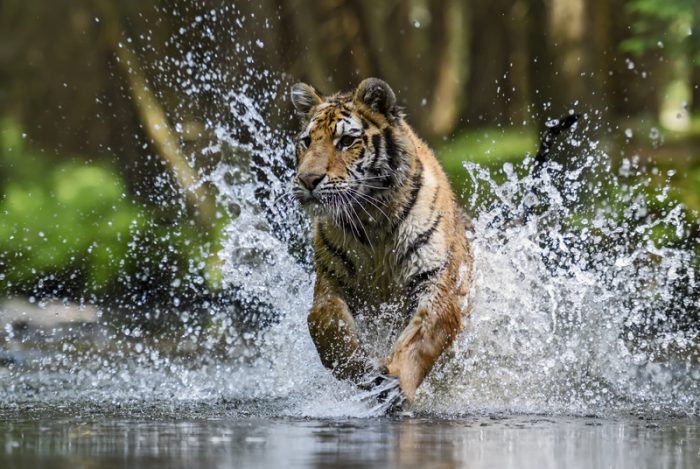The tiger is one of the most popular animals you can name. It is the mascot of hundreds of sports teams around the world. It is one of the twelve animals of the Chinese zodiac, the national animal of four countries (India, South Korea, Bangladesh, and Malaysia), and is a part of countless folktales and myths.
You can find tigers everywhere—in books, on flags, on clothes, and as toys. Everywhere, it seems, but in the wild.
The species of tiger that once lived all across Central Asia—the Siberian tiger—is now only found in eastern Russia. (Getty Embed)
Tigers are a seriously endangered animal. It is estimated that where there were once around 100,000 wild tigers at the start of the 1900s, there are now only between 3,000 to 4,000. Many countries that once boasted strong tiger populations no longer have any. One of them is the Central Asian country of Kazakhstan.
But that may be changing soon.
Bringing back the orange and black
Kazakhstan and its surrounding countries. (Getty Embed)
After once being one of Central Asia's top predators, tigers had completely disappeared from that part of the world by the 1960s. Central Asia includes countries like Russia, Iran, Iraq, and Turkmenistan. Kazakhstan is one of the largest countries in this region. Tigers have been extinct there since the 1940s. Habitat loss, overhunting of their prey, and poaching of tigers drove the cats out of a place they had called home for thousands of years.
But now a plan announced by the Kazakh government and the World Wildlife Fund (WWF) is working to change all of that. The tigers will be brought to live in the Ili-Balkhash region of the country.
Experts believe that the area around Lake Balkhash is the ideal place to restart a wild population of tigers. (Getty Embed)
“Thanks to years of close collaboration between Kazakhstan and Russian conservation experts," said Igor Chestin, director of WWF-Russia, "we have now identified the best possible territory in Ili-Balkhash for the restoration of a thriving wild tiger population."
This large region has one of the world's largest lakes at its centre, Lake Balkhash. If this effort is successful, it will the first time wild tigers have been brought back to a country where they were once extinct.
Setting it up
Conditions need to be just right for tigers to live in Kazakhstan again. (Getty Embed)
The first tigers won't be released until at least 2025. In the meantime, the region needs to be properly set up to receive these striped cats. According to the WWF's Ekaterina Vorobyeva, this means "tackling poaching and illegal activities, having well-trained and equipped rangers, thriving prey populations and engaged local communities."
In other words, making sure that the tigers will live in a place where they're protected, respected, and have enough food to hunt. These things all take time. And with so much on the line, animals experts aren't taking any chances.
The Kazakhstan plan is part of a larger world tiger program called Tx2. Its goal? To double the world's current wild tiger population by 2022—the next Year of the Tiger in the Chinese zodiac. These are ambitious plans, but if it means the world gets more tigers, we couldn't be happier!
 After years of declining number, the tiger could be making a much needed global comeback. (© David Havel | Dreamstime)
After years of declining number, the tiger could be making a much needed global comeback. (© David Havel | Dreamstime)










😛 😀 😉 🙂 ❗ 💡 😆 😯 😎 😮 😛 😛 😛 😛